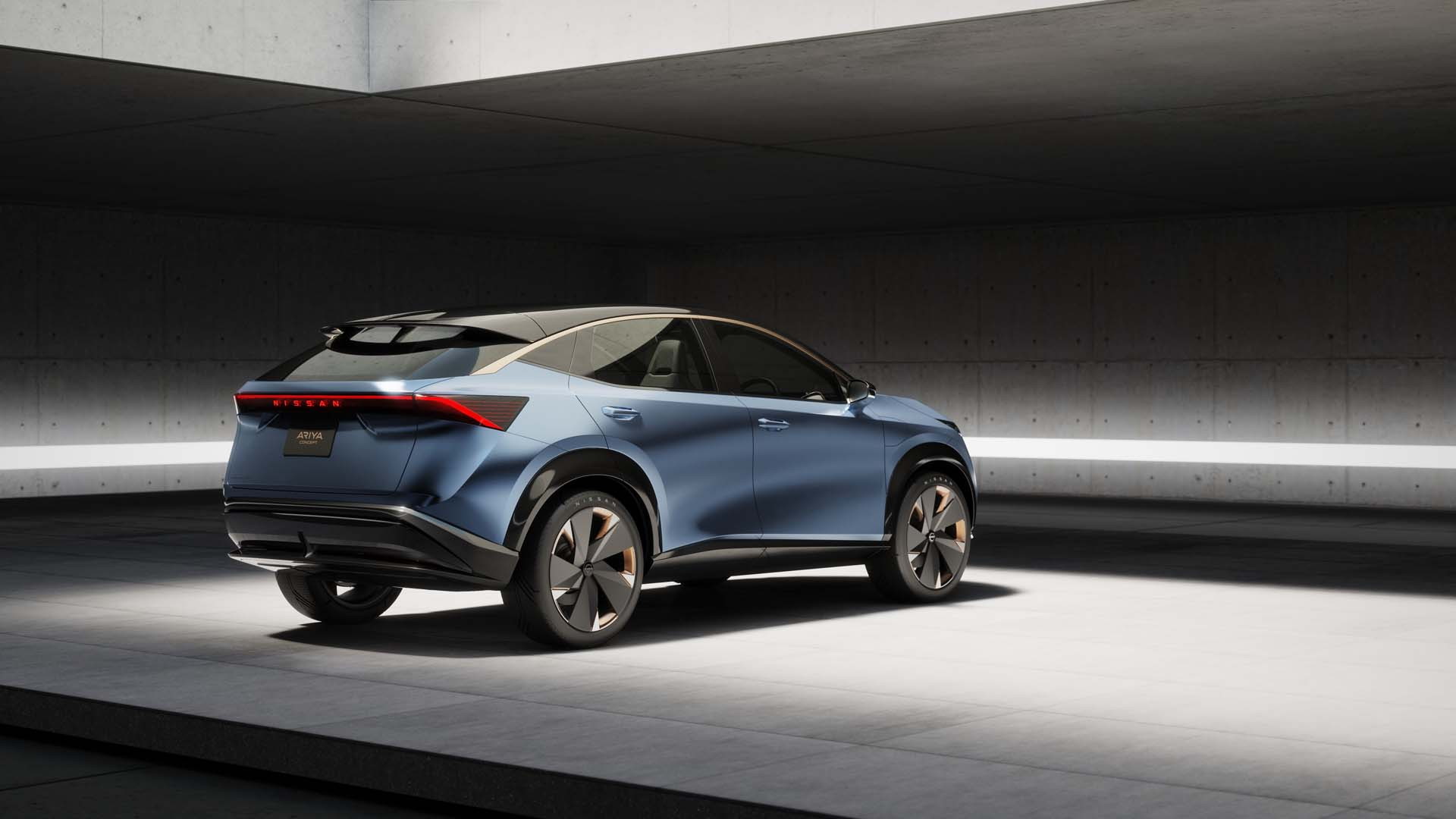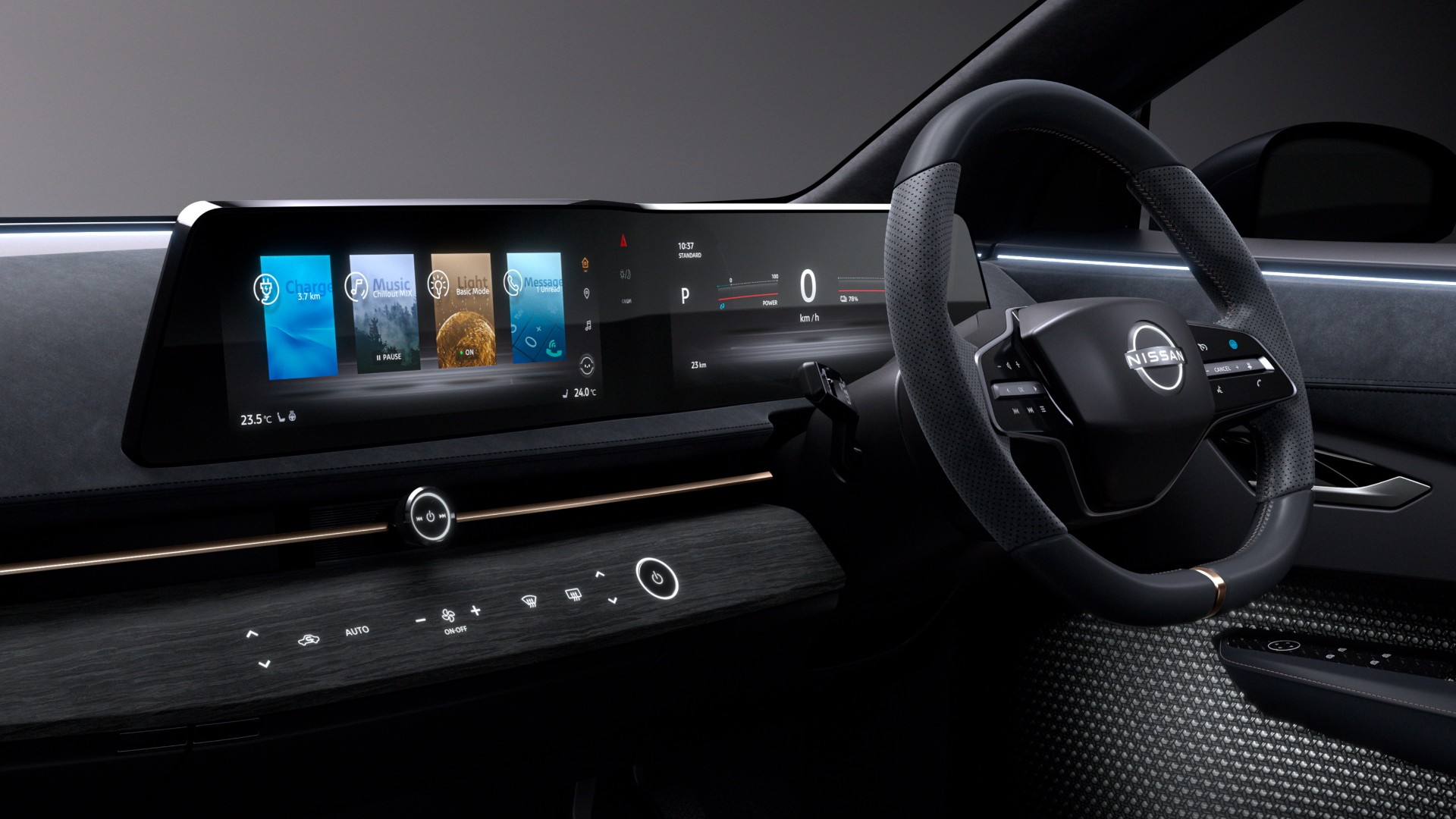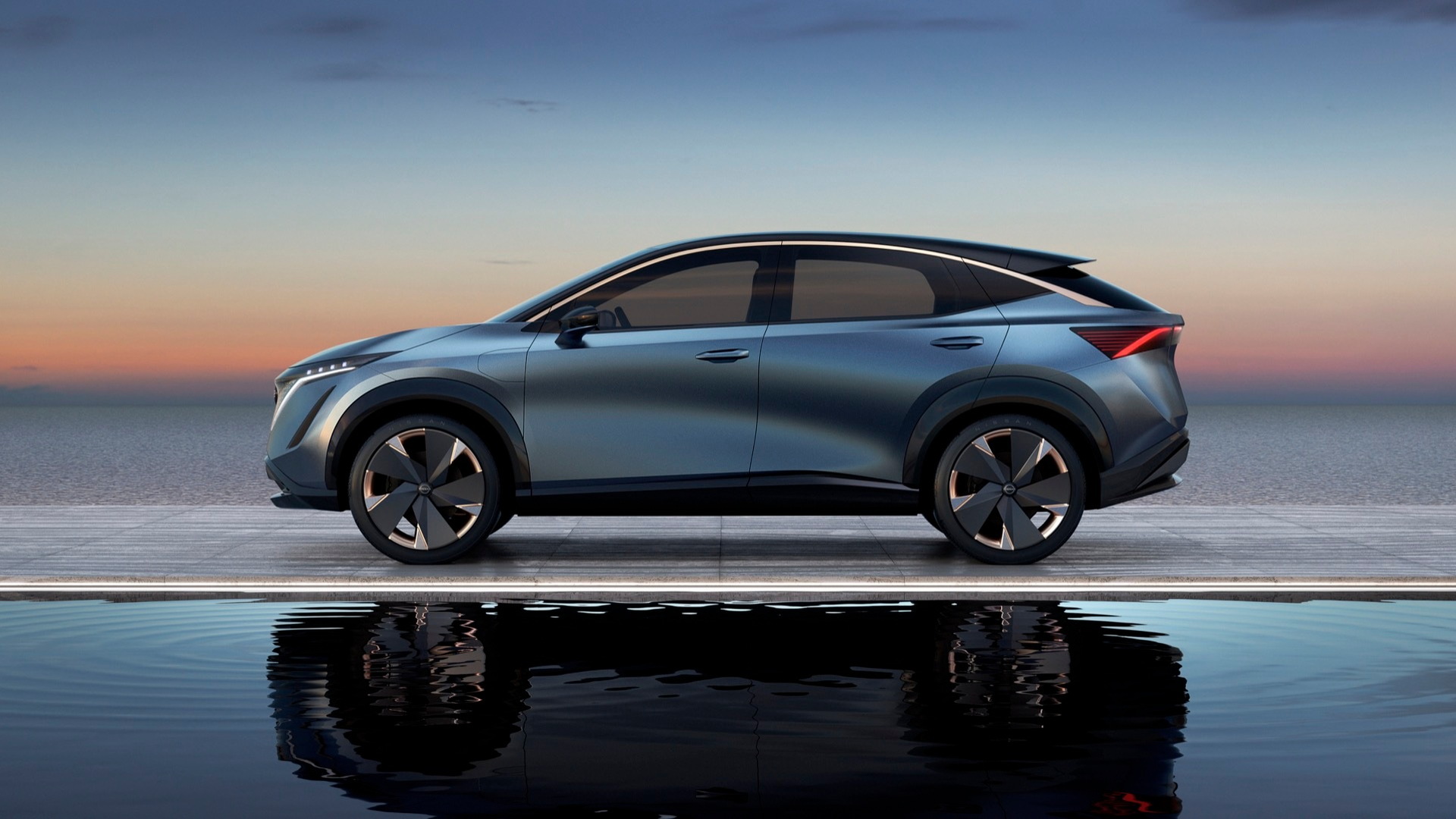Nissan will reveal the production version of its long-awaited electric crossover based on the Ariya Concept on July 15 in Yokohama, Nissan confirmed Monday at its global automaker’s annual shareholders’ meeting.
Although Nissan USA confirmed the date of the debut to Green Car Reports, it isn’t yet providing specific launch timing for the U.S. market.
While the model isn’t expected to arrive in the U.S. until the second half of 2021—as a 2022 model—previous reports suggest it’s likely to be delivered in at least some of its other primary markets (Japan, Europe, and China) before then.

Nissan Ariya Concept instrument panel design
So far, Nissan officials have confirmed that the production Ariya will offer specs very close to what it teased in the Ariya Concept it showed at the Tokyo Motor Show last fall and at CES in Las Vegas early this year: a 300-mile battery range (driving cycle not disclosed) and a 0-60 mph time of under 5.0 seconds.
Alfonso Albaisa, Nissan's senior VP for global design, said last year the production Ariya would be “faster or as fast as a Z car.” He also pointed to the concept’s minimalist instrument-panel design as something that will carry over to production.
Green Car Reports has sampled Nissan’s next-generation e-4orce all-wheel drive system that uses torque from the Ariya’s dual-motor setup to help flatten the car in corners and, potentially, ride better.

Nissan Leaf e-4orce demo - Las Vegas Motor Speedway, January 2020
The model is to be built on a new Common Module Family architecture intended specifically for electric vehicles—called CMF-EV internally—that will use liquid-cooled battery packs. The platform will also be the basis for future Infiniti models to arrive in the next several years, along with Renault and Mitsubishi models.
In a May presentation, Nissan reported that it is on track to introduce more than eight “pure EVs” by 2023. It listed an “electrification ratio” of 60% for Japan, 23% for China, and 50% for Europe by fiscal year 2023—a ratio that includes e-Power hybrids—with a target of more than one million sales by then.



















